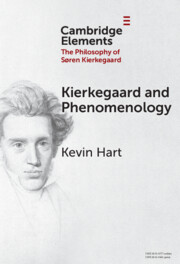Refine search
Actions for selected content:
181 results
Speech pause and speech rate for evaluating Alzheimer’s and mild cognitive impairment: A meta-analysis
-
- Journal:
- Journal of the International Neuropsychological Society , First View
- Published online by Cambridge University Press:
- 11 December 2025, pp. 1-8
-
- Article
- Export citation
Deformation dynamics of biconcave red blood cells in viscous fluid driven by ultrasound
-
- Journal:
- Journal of Fluid Mechanics / Volume 1023 / 25 November 2025
- Published online by Cambridge University Press:
- 20 November 2025, A22
-
- Article
- Export citation
Modelling the dynamics of an oil drop driven by a surface acoustic wave in the underlying substrate
-
- Journal:
- Journal of Fluid Mechanics / Volume 1022 / 10 November 2025
- Published online by Cambridge University Press:
- 10 November 2025, A49
-
- Article
-
- You have access
- Open access
- HTML
- Export citation
Role of convecting disturbances and acoustic standing waves in supersonic impinging jet
-
- Journal:
- Journal of Fluid Mechanics / Volume 1021 / 25 October 2025
- Published online by Cambridge University Press:
- 16 October 2025, A29
-
- Article
-
- You have access
- Open access
- HTML
- Export citation
Acoustic-gravity quantum tunnelling analogy
-
- Journal:
- Journal of Fluid Mechanics / Volume 1018 / 10 September 2025
- Published online by Cambridge University Press:
- 19 September 2025, A18
-
- Article
-
- You have access
- Open access
- HTML
- Export citation

Kierkegaard and Phenomenology
-
- Published online:
- 16 August 2025
- Print publication:
- 11 September 2025
-
- Element
- Export citation
Vortex modes in acoustofluidic cylindrical resonators
-
- Journal:
- Journal of Fluid Mechanics / Volume 1015 / 25 July 2025
- Published online by Cambridge University Press:
- 17 July 2025, A34
-
- Article
- Export citation
Acoustic disambiguation of homophonous morphs is exceptional
-
- Journal:
- Journal of Linguistics , First View
- Published online by Cambridge University Press:
- 10 July 2025, pp. 1-33
-
- Article
-
- You have access
- Open access
- HTML
- Export citation
Acoustic characteristics of stop consonants in Vietnamese children and adults
-
- Journal:
- Journal of Child Language , First View
- Published online by Cambridge University Press:
- 10 July 2025, pp. 1-19
-
- Article
-
- You have access
- Open access
- HTML
- Export citation
Acoustic study of vowel quality in Ghanaian English
-
- Journal:
- English Today , First View
- Published online by Cambridge University Press:
- 27 June 2025, pp. 1-8
-
- Article
- Export citation
Acoustothermal effect: mechanism and quantification of the heat source
-
- Journal:
- Journal of Fluid Mechanics / Volume 1012 / 10 June 2025
- Published online by Cambridge University Press:
- 04 June 2025, A11
-
- Article
-
- You have access
- Open access
- HTML
- Export citation
Resonant triad interactions of two acoustic modes and a gravity wave
-
- Journal:
- Journal of Fluid Mechanics / Volume 1008 / 10 April 2025
- Published online by Cambridge University Press:
- 07 April 2025, A15
-
- Article
-
- You have access
- Open access
- HTML
- Export citation
Unified limit-cycle amplitude prediction and symmetry-breaking analysis of combustion instabilities
-
- Journal:
- Journal of Fluid Mechanics / Volume 1007 / 25 March 2025
- Published online by Cambridge University Press:
- 17 March 2025, A66
-
- Article
- Export citation
5 - Note, Sharpness, and Heaviness
- from Part II - Texts
-
- Book:
- The Science of Music
- Published online:
- 19 December 2024
- Print publication:
- 02 January 2025, pp 121-144
-
- Chapter
- Export citation
Introduction - Whispers in the Roar
-
- Book:
- Acoustics in Nineteenth-Century Literature and Science
- Published online:
- 13 December 2024
- Print publication:
- 19 December 2024, pp 1-16
-
- Chapter
- Export citation
16 - The Art of Counterpoint in Performance
- from Part IV - The Art in Action
-
- Book:
- The Art of Counterpoint from Du Fay to Josquin
- Published online:
- 05 December 2024
- Print publication:
- 12 December 2024, pp 293-318
-
- Chapter
- Export citation
An acoustic exploration of sibilant contrasts and sibilant merger in Mixean Basque
-
- Journal:
- Journal of the International Phonetic Association / Volume 54 / Issue 2 / August 2024
- Published online by Cambridge University Press:
- 16 May 2024, pp. 677-706
-
- Article
-
- You have access
- Open access
- HTML
- Export citation
Experiments on symmetry breaking of azimuthal combustion instabilities and their analysis combining acoustic energy balance and flame describing functions
-
- Journal:
- Journal of Fluid Mechanics / Volume 985 / 25 April 2024
- Published online by Cambridge University Press:
- 23 April 2024, A31
-
- Article
- Export citation
Characterizing Clay Mineral Suspensions using Acoustic and Electroacoustic Spectroscopy — A Review
-
- Journal:
- Clays and Clay Minerals / Volume 52 / Issue 2 / April 2004
- Published online by Cambridge University Press:
- 01 January 2024, pp. 145-157
-
- Article
- Export citation
Eleven vowels of Imilike Igbo including ATR and RTR schwa
-
- Journal:
- Journal of the International Phonetic Association / Volume 54 / Issue 1 / April 2024
- Published online by Cambridge University Press:
- 20 December 2023, pp. 294-317
-
- Article
-
- You have access
- Open access
- HTML
- Export citation









